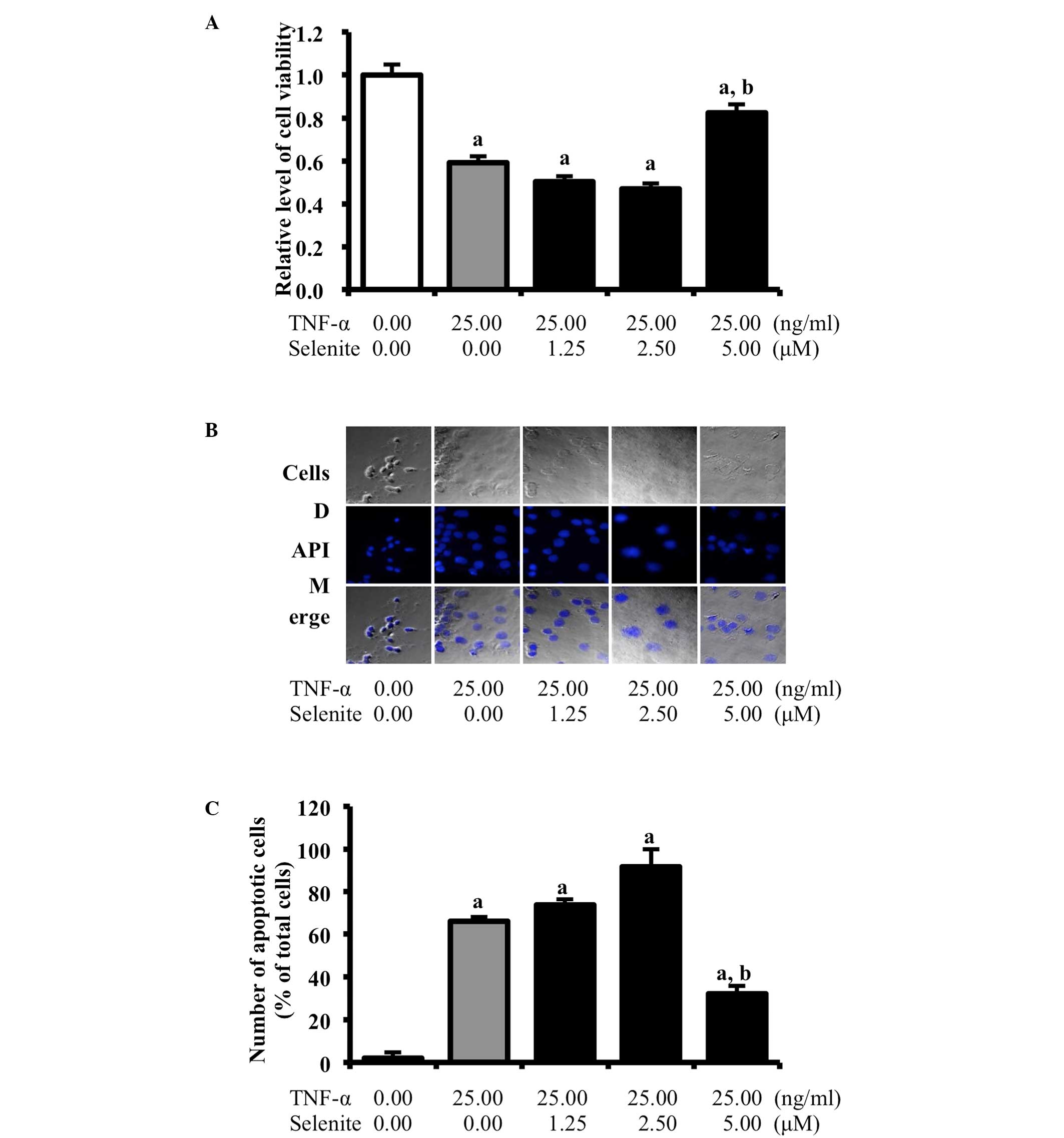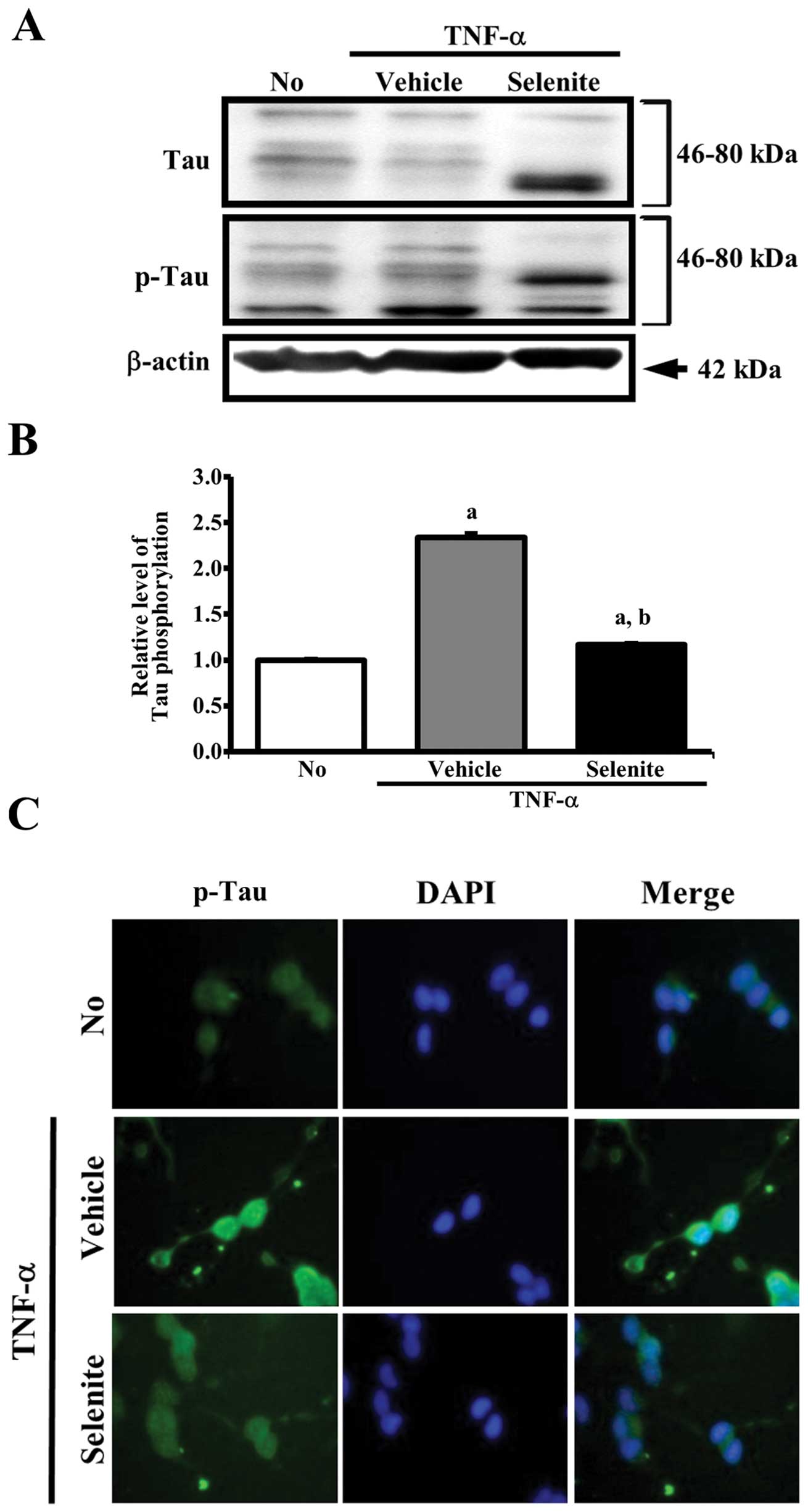Selenium treatment significantly inhibits tumor necrosis factor‑α‑induced cell death and tau hyperphosphorylation in neuroblastoma cells
- Authors:
- Published online on: August 4, 2014 https://doi.org/10.3892/mmr.2014.2442
- Pages: 1869-1874
Metrics: Total
Views: 0 (Spandidos Publications: | PMC Statistics: )
Total PDF Downloads: 0 (Spandidos Publications: | PMC Statistics: )
Abstract
The hyperphosphorylation of the protein tau disrupts its normal function on regulating axonal transport and leads to the accumulation of neurofibrillary tangles (NFT), which are involved in the pathogenesis of Alzheimer's disease (AD). This study was performed to investigate whether sodium selenite may inhibit the hyperphosphorylation of tau induced by treatment with tumor necrosis factor‑α (TNF‑α). For this purpose, we studied the changes in cell viability, tau phosphorylation and activity of tau kinases in TNF‑α+selenite-treated neuroblastoma cells. Cell viability was significantly recovered in the group cotreated with TNF‑α and 5 µM selenite for 24 h, but not in the groups treated with TNF‑α and lower concentrations of selenite. Tau phosphorylation was significantly higher in the group treated with TNF‑α+vehicle (instead of selenite) compared to the non‑treated group. However, in the TNF‑α+selenite‑treated group, the total phosphorylation level of tau protein at the Ser404 site was significantly reduced compared to the TNF‑α+vehicle group, although western blot analysis revealed one band of increased intensity in the p‑tau sample, corresponding to a phosphorylated tau isoform of 65‑70 kDa. In addition, sodium selenite treatment led to a significant recovery in the immunofluorescence intensity of the p‑tau protein in the cytoplasm and nucleus and in the apoptotic rate of neuroblastoma cells stained with the p‑tau antibody and 4',6‑diamidino‑2‑phenylindole (DAPI). The phosphorylation of two protein kinases responsible for phosphorylation of tau, glycogen synthase kinase 3β (GSK‑3β) and Akt, also known as protein kinase B, was markedly decreased in the TNF‑α+selenite‑treated group relative to the TNF‑α+vehicle‑treated group. Overall, these results provide strong evidence that sodium selenite (selenium) can inhibit cell death and tau phosphorylation induced by TNF‑α in neuroblastoma cells, through the inhibition GSK‑3β and Akt phosphorylation.












